
|
|
Introduction
|

|
 Backgammon Galore FAQ
Backgammon Galore FAQ 
By Tom Keith (2005).
How to set up a backgammon board, move the checkers, use the doubling cube, and proper etiquette. How to play other games such as acey-deucey, Nackgammon, and Greek variations. Match play rules and strategy. How ratings work.
|

|
 Introduction to Backgammon
Introduction to Backgammon
By Patti Rosenfeld (1974).
Welcome to backgammon, an age-old game perfectly suited to modern times. It is the oldest game in recorded history and has often been called the aristocrat of popular games. (From the Forward of Beginning Backgammon.)
|

|
 Science and Chance, and the Science of Chance
Science and Chance, and the Science of Chance
By Bruce Becker (1974).
The excitement, even of the spectators, was like that I had experienced at the craps table in Vegas. I suddenly realized that I was watching not merely a game for sport, but a gladiatorsí contest, in the full sense of the world. (From Backgammon for Blood, Chapter 1.)
|

|
 Backgammon at Wikipedia
Backgammon at Wikipedia
By Wikipedia (2006).
Description of the history of backgammon, rules of the game, strategy and tactics, social and competitive play, and backgammon software.
|

|
 Hardy's Backgammon FAQ
Hardy's Backgammon FAQ
By Hardy Huebener (2007).
Questions and answers on the history of backgammon, the rules of backgammon, backgammon literature, software, records, playing online, forums, and equipment.
|

|
 Backgammon Frequently Asked Questions
Backgammon Frequently Asked Questions
By Mark Damish (1995).
A list of frequently asked questions that was once posted to the newsgroup rec.games.backgammon. Some sections are now obsolete, but parts are still useful: What is backgammon? What are the rules of the game, etc?
|

|
The Five Biggest Myths of Backgammon
By Phil Simborg (2007).
Phil Simborg debunks some common misconceptions about the game of backgammon.
|

|
A Beginner's Guide to Backgammon
By Phil Simborg (2007).
If you are new to backgammon, here are some thoughts that will save you a lot of anguish and pain over the next few years. I wish I didn't have to learn these things the hard way myself!
|

|
Backgammon for Beginners
By Michael Crane (2009).
Rules and basic strategy.
|

|
Backgammon
By Encyclopedia Britannica (1911).
An introduction to the game of backgammon from the 1911 edition of Encyclopedia Britannica.
|

|
Sydney Backgammon FAQ
By Mark Driver (2004).
A list of frequently asked questions (and their answers) prepared for the Sydney Backgammon Club.
|
|
 |
|
Rules
|

|
 Rules of Backgammon
Rules of Backgammon 
By Tom Keith (1995).
Complete rules of backgammon as it is played today: How to set up the board, the object of the game, how to start, how to move the checkers, hitting and entering, bearing off, using the doubling cube, and scoring.
|

|
 Introduction to the Rules of Backgammon
Introduction to the Rules of Backgammon 
By Tom Keith (2005).
A beginner's guide to backgammon, including answers to the most frequently asked questions about the rules. Everything you need to know about using the doubling cube, scoring, and the proper procedure and etiquette.
|

|
 Paul Magriel's Rules of Backgammon
Paul Magriel's Rules of Backgammon
By Paul Magriel (1976).
Rules from Paul Magriel's 1976 book, Backgammon. Magriel's rules are not so much formal rules of the game as they are an explanation of how the rules work.
|

|
Know the Rules
By Paul Magriel (1984).
There are several situations in backgammon where the rules of the game may appear to be ambiguous. You can test your knowledge by answering the following questions. The established interpretation of the rules follows.
|

|
 Basics for Beginners
Basics for Beginners
By Bruce Becker (1974).
Straightforward directions on how to play backgammon. "I must admit that the instructions here are equally simplistic [to those you get with game boards], but, hopefully, are more understandable." (From Backgammon for Blood, Chapter 2.)
|

|
 Laws of Backgammon, 1970
Laws of Backgammon, 1970
By International Backgammon Association and Inter-Club League of New York (1970).
Rules prepared in conjunction with the International Backgammon Association and the Inter-Club League of New York and published in Jacoby's and Crawford's book, The Backgammon Book. Basic rules of play very similar to the rules published in Obolensky's and James's book.
|

|
 IBA Rules, 1969
IBA Rules, 1969
By International Backgammon Association (1969).
Rules prepared by the International Backgammon Association and published in Obolensky's and James's book Backgammon: The Action Game. Basic rules of play, updated from the 1931 rules and very similar to the rules published in Jacoby's and Crawford's book.
|

|
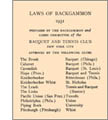 Laws of Backgammon, 1931
Laws of Backgammon, 1931
By New York Racquet and Tennis Club (1931).
In 1931, Wheaton Vaughan organized a committee of interested clubs to formulate a standard set of rules. The rules prepared by this committee became widely accepted across the United States and they form the basis for the standard rules of backgammon as it is played around the world today.
|

|
 Questions and Answers about the Rules
Questions and Answers about the Rules
By Tom Keith.
Answers to common questions people have about the rules of backgammon. From the Backgammon Galore Forum Archive.
|
|
 |
|
Variants
|

|
 Backgammon Variants
Backgammon Variants 
By Tom Keith (2004).
There are dozens of great games you can play on a backgammon board, ranging from simple games for children to very elaborate games. Here are rules for all the most ones including Acey-Deucey, Fevga, Gul Bara, Gioul, Moultezim, Narde, Plakoto, Trictrac, Hyper-Backgammon, and Nackgammon.
|

|
 Rules for the Game of Trictrac
Rules for the Game of Trictrac 
By David Levy (1998).
Complete rules for how to play the game of trictrac. Trictrac is a rich, formal game that was immensely popular in French society prior to the revolution. The rules are quite elaborate. The goal is to score points for particular positions and movements.
|

|
Hypergammon Fun
By Tom Keith (2018).
Hypergammon is a simplified version of backgammon. It uses all the same rules as backgammon, and the same board, except it starts with 3 checkers per side instead of 15. This series of 12 articles explores the strange properties hypergammon.
|

|
 How to Play Acey-Deucey
How to Play Acey-Deucey
By Tom Keith (2004).
Acey-deucey a popular backgammon variants where the roll of 1-2 gives you extra turns. Here are the rules to three popular versions of the game.
|

|
Relaxing at War with Acey Deucey
By Allan Bjornstad (2011).
Can you imagine the scene? Twenty five young sailors, wearing dungarees with their names on their back, thousands of miles from home, on the rear deck of an aircraft carrier, all playing Acey Deucey?
|

|
 Acey Deucey
Acey Deucey
By Wikipedia (2006).
Acey-deucey is a variant of backgammon, which features a differing starting position, opening play, and rules for the endgame and the use of the doubling cube. Because checkers may be retained in one's opponent's home board, the game offers substantial opportunities for backgame play.
|

|
 The Many Games of Backgammon
The Many Games of Backgammon
By Tom Keith (2006).
How to play the most common backgammon variants: Nackgammon, hyper-backgammon, long-gammon, roll-over, backgammon-to-lose, acey-deucey, the Greek games (portes, plakoto, and fevga), trictrac, Russian backgammon, French backgammon, Dutch backgammon, and snake.
|

|
 Tables (Board Game)
Tables (Board Game)
By Wikipedia (2006).
Tables is a general name given to a class of board games similar to backgammon, played on a board with two rows of 12 vertical markings called "points". Players roll dice to determine the movement of pieces. Tables games are among the oldest known board games, and many variants are played throughout the world.
|

|
 Nackgammon
Nackgammon
By Kit Woolsey (2001).
A few years ago, Nack Ballard had an idea. Since we all like the complex games, let's modify the starting position so we are more likely to get into a complex game. This game was appropriately named Nackgammon. It is quite popular, and a lot of fun. Here is some strategy for playing Nackgammon.
|

|
The Snowie Challenge Game
By Phil Simborg (2007).
A way to play backgammon that is challenging, fun, and the best learning experience. Two people play each other on the computer, usually on Snowie, and have the right to challenge every play and cube decision the opponent makes.
|

|
 Tavli (Greek Backgammon)
Tavli (Greek Backgammon)
By Vassilis Condos (2006).
A description of the rules of the Greek games of plakoto and fevga. There is also an explanation of the different Greek terms.
|

|
 Tavla in Turkey
Tavla in Turkey
By Michael Crane (2000).
Tavla is played everywhere in Turkey, shops, cafes, restaurants, bars, lokantas, hotels, pensions, pavements, even in the middle of the road! Although it is the same backgammon that we all know and love, there are a few small variations in the way in which it is played. Tavla is played at a lightning pace.
|

|
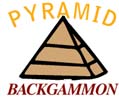 Pyramid Backgammon
Pyramid Backgammon
By Bill Davis (2006).
In Pyramid Backgammon, you can win either by being the first to bear off all your checkers or by making a "pyramid" pattern (a distribution of 1-2-3-2-1). Pyramid Backgammon is truly a game of position. For example, it seems unwise to escape both of your back men early, for this would allow your opponent complete freedom to construct his pyramid.
|

|
 Two Worlds Collide: Casual and Formal Backgammon
Two Worlds Collide: Casual and Formal Backgammon
By Mark Driver (2001).
Some of the differences between formal and casual backgammon: Can you put more than five checkers on a point? Are you allowed to "pick and pass"? Is there a doubling cube? Touch rule? Must players bear off exactly?
|

|
 Alternative Rules to Make the Game Interesting
Alternative Rules to Make the Game Interesting
By Phil Simborg (2003).
A selection of games with rules aimed at making the backgammon more interesting, more skillful, or just more fun. Some of these rules are well-established variants; others are more lighthearted.
|

|
Alternative Rules to Make Backgammon Interesting
By Phil Simborg (2007).
Backgammon is a great game the way it is. From time to time, however, it is fun to change the game up a bit. Here are some alternative ways to play that you not only will enjoy, but you will find to be interesting learning exercises as well.
|

|
 Sugoroku
Sugoroku
By Wikipedia (2006).
Sugoroku plays identically to backgammon except that: (1) Doubles are not special; if you roll doubles, each die counts only once. (2) There is no "bearing off"; the goal is to move all your men to the last six spaces of the board. (3) There is no doubling cube. (4) You may not form a prime of six contiguous points to obstruct your opponent.
|

|
 Other games played on a backgammon board
Other games played on a backgammon board
By Mark Damish (1995).
From the Backgammon FAQ posted to rec.games.backgammon in 1995. Descriptions of: Acey-Deucey, one-point matches, Hyper-Backgammon, Nackgammon, Tapa, Narde, Gul Bara, Feuga, and diceless backgammon.
|

|
 Other Forms of Backgammon
Other Forms of Backgammon
By Oswald Jacoby and John R. Crawford (1970).
A description of some other forms of backgammon commonly played in other countries: Eureika, Blast-off, Moultezim, Acey-deucy, Plakoto, and Gioul. (From The Backgammon Book, Chapter 17.)
|

|
 Backgammon Variations
Backgammon Variations
By Tom Keith.
From the Backgammon Galore Forum Archive, collected articles on different games that can be played on a backgammon board: acey-deucey, "backwards play", domino gammon, duodecagammon, duplicate backgammon, feuga, Jacquet, longgammon, Mexican, misere, nuclear backgammon, pass-or-pick a roll, plakoto, roll over, Russian, sudden death, trictrac, and others.
|

|
Slot backgammon
By Fabrice Liardet (2010).
In Slot Backgammon, the player who wins the opening roll is forced to open the game with a slot. Here is an annotated game of slot backgammon.
|

|
Duo-Gammon
By Bill Davis (1980).
Another form of doubles backgammon play became history this summer when the first-ever Duo-Gammon tournament was conducted in the Chicago suburb of Northbrook by the National Backgammon League.
|

|
Chessgammon
By Dave Frary and Jeff Hayes (2009).
Will you send your opponent's uncovered King to the bar, thus risking all your Pawns already home? Which piece will you leave uncovered when the dice go bad? Every roll can change the game, every choice can affect your position in the march toward victory. Welcome to the world of Chessgammon, where Chess-like strategy meets Backgammon-like chance.
|

|
How to play NC-Backgammon
By Naim «ağman (2008).
NC-Backgammon is a new variant of an existing classical backgammon. The only exception is the lack of the rolling of dices.
|

|
Propositions
By Danny Kleinman (1980).
A proposition differs from an ordinary backgammon game in that it starts from a different position or a different set of rules. Usually the proposition is intended to establish empirically some judgment about that particular game. But sometimes the person offer to play the proposition may already know, either from analysis or from prior experience.
|

|
Plakoto Board Game Strategy
By John S. Mamoun (2018).
Plakoto is a variation of the game of backgammon played in Greece and Turkey, and in Egypt, where it is known as Mahbooseh. In plakoto, unlike in backgammon, a checker cannot be hit and sent to the bar. Instead, a checker is blocked if an opponent lands on the position point where that checker is located.
|

|
Eskgammon (d10gammon)
By Peter Backgren (2013).
Here's a new game that's as much fun to play as when you first learned to play backgammon. It is basically one rule change and a few clarifications.
|

|
How to Play NC Backgammon
By Anonymous (2012).
NC Backgammon is a new variant of an existing classical backgammon. "NC" stands for "no chance." Instead of using dice to determine dice rolls, players choose their own numbers based on a set of conditions at the time. The numbers you choose determine which numbers are available to your opponent on his turn.
|

|
Acey Deucey
By Jon Bjornstad (2006).
"I was 21 years old and aboard ship in the Pacific. When we werenít bombing Japan, we played Acey Deucey. Itís a good game and it eased the troubles of war."
|
|
 |
|
History
|

|
 The History of Backgammon
The History of Backgammon 
By Oswald Jacoby and John R. Crawford (1970).
An extensive history of backgammon tracing its origins through Mesopotamia (now Iraq), Egypt, India, Greece, Rome, the Middle East, Europe, England, and the United States. With photographs from museums and art galleries around the world. (From The Backgammon Book, Introduction.)
|

|
 A History of Backgammon
A History of Backgammon 
By Mark Driver (2000).
Subtitled "The Evolution of Backgammon and the Factors Influencing Its Popularity and Longevity," this is one of the most complete histories of backgammon ever written.
|

|
 History of Backgammon
History of Backgammon 
By Chuck Bower (1999).
A 20th Century history and status report on backgammonóone individual's perspective. This article as three parts: "A Brief History of Backgammon", "The Computer Revolution", and "Present and Future".
|

|
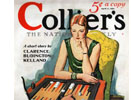 Backgammon and Doubling: Just the Facts
Backgammon and Doubling: Just the Facts 
By Bill Davis (2009).
Chicago Point has collected a treasure trove of historical information on the introduction of doubling in backgammon, from old newspapers, magazines, and books.
See also: New Historical Information uncovered by Frank Frigo.
|

|
 The Origin of Backgammon
The Origin of Backgammon
By Anonymous (2010).
A collection of pages outlining various parts of the history of backgammon as it relates to other games over the past 1000 years. Includes a timeline, bibliography, and gallery.
|

|
 Max's Backgammon Photo Album
Max's Backgammon Photo Album
By Max Maxakuli.
Michael "Max" Maxakuli was publisher of the Las Vegas Backgammon Magazine for a decade during the 1970s and early 1980s. Over the past 30 years, Max accumulated a treasure trove of people pictures from the days when the backgammon scene was an elegant way of life.
|

|
 The 1930's Understanding of Doubling
The 1930's Understanding of Doubling
By Vic Morawski (2008).
A look at how doubling might have started in backgammon. Was it invented by a single person? Was it a logical extension of automatic doubles, where the stake of the game is doubled when both players roll the same number to start the game?
|

|
World Backgammon Championship 1967 to 1979
By Bill Robertie (2015).
Prior to 1979, the lists of World Backgammon Champions on the web differ in a number of respects. In this post I lay out what I think is an accurate list for the period 1967 to 1979.
|

|
 Backgammon Sets of Different Materials
Backgammon Sets of Different Materials
By University of Waterloo (2007).
Today around the world, the standard backgammon game is for two players. Here are some examples from the collection the Elliott Avedon Museum of Games (University of Waterloo).
|

|
 Backgammon in a 13th Century Book of Games
Backgammon in a 13th Century Book of Games
By University of Waterloo (2010).
A number of backgammon games are illustrated in the Libro de Juegos, some with detailed explanations. This book was the first encyclopedia of games in European literature and was commissioned by Alfonso X (1221-1284), the King of Castile. During Alfonso's time, in the Muslin world backgammon was called Nard, while in other parts of Europe it was known as "Roman tables" or tabulae.
|

|
 Tabular History of Backgammon
Tabular History of Backgammon
By Hardy Huebener (2006).
A timeline of some of the highlights in the history of backgammon starting with the game Senet in 3500 BCE up to the introduction of Gnu Backgammon in 1999.
|

|
 Backgammon History
Backgammon History
By Chris Bray (2007).
Backgammon is one of the oldest games in existence, alongside Go and Chess. The board with its twenty-four points and thirty checkers (or pieces or men) has been around for a long time but the game has not always been called backgammon.
|

|
 R.I.P. Inside Backgammon
R.I.P. Inside Backgammon
By Chris Bray (1998).
Throughout its brief existence "Inside Backgammon" has given us remarkable insights into backgammon theory. Goulding's sardonic wit, combined with Robertie's drier but no less effective writing style, produced a magazine with top quality content throughout the eight years of its life.
|

|
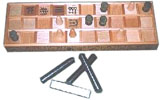 Backgammon History and Useful Information
Backgammon History and Useful Information
By James Masters (1997).
A history of backgammon and backgammon-type games with pictures of modern-day versions of the games.
|

|
 Backgammon in Advertisements
Backgammon in Advertisements
By Hardy Huebener (2007).
Some examples of backgammon featured in magazine advertisements throughout the 20th Century.
|

|
 Backgammon History
Backgammon History
By Martin Short (2001).
A quick history of backgammon from its origins in Mesopotamia to modern day with the Internet, backgammon servers, and neural-net backgammon programs.
|

|
 Games of the Viking and Anglo-Saxon Age
Games of the Viking and Anglo-Saxon Age
By Ben Levick and Mark Beadle (1992).
A description of dice and board games from the time of the Anglo-Saxons. Several nice pictures.
|

|
 The Game of Senet
The Game of Senet
By Catherine Soubeyrand (1995).
Senet is an Egyptian race game and may be the ancestor of modern backgammon. We know of this game through ancient Egyptian boards that have survived to this day.
|

|
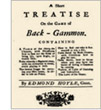 History of Backgammon
History of Backgammon
By Michael Strato (1999).
Backgammon is said to be the oldest game in recorded history. Its origin stems from a board game that was first played about 5000 years ago in Ur of the Chaldees in Mesopotamia. This brief history of the game is from the demo issue of GammonVillage.
|

|
 History of Backgammon
History of Backgammon
By Joy Lee Barnhart (1998).
A brief history of the game from the online manual of Bob's Backgammon.
|

|
 Backgammon History
Backgammon History
By Tom Keith.
The Backgammon Galore Forum Archive: Collected articles on the history of backgammon which have been posted to various forums.
|

|
Backgammon in the Land of the Rising Sun
By Steve Herman (1981).
The Japanese call their nation "The Land of the Rising Sun." Backgammon is the "in thing" to do at discos, pubs, and coffee houses in the European and American metropolitan areas, "Tokyoites" are now rolling the dice, counting pips, and turning the cube.
|

|
Backgammon History
By Oswald Jacoby (1981).
I was taught the game by the late Worthington Davis in 1928 or 1929. Play in those days was terrible. I remember Worthy taught that 5-2, 4-3, 4-1, and 3-2 should all be played safe. The invention of the doubling cube some time in the roaring twenties changed backgammon into an interesting game.
|

|
The History of Backgammon
By B. Selrahc (1979).
It is fitting that the precise origin of backgammon is unknown. No other game has proved as fascinating or has become as enduring a leisure activity. The constant historical references to backgammon demonstrate its universal excitement and enduring popularity.
|

|
Backgammon in Art
By Svilen Todorov (1999).
Two galleries of historical paintings and drawings depicting backgammon.
|

|
Backgammon
By New York Times (1977).
That rattle-rattle, plop-plop that's being heard in living rooms and clubs so much these days is the sound of the dice in backgammon, a game that may date back to 3,000 B.C. and is increasingly popular in the 1970s.
|

|
Everyone for Backgammon
By Edwin Shrake (1964).
Sports Illustrated: Backgammon is indeed a game in which fortunes are won and lost, mostly in exclusive men's clubs where the stakes are high and the action is fast. It is a game with a history that can be traced back to the pharaohs.
|

|
A Short History of Modern Backgammon
By Bill Robertie (2016).
In this post Iíll give you a short history of the growth and development of backgammon since 1920, when the game began to take on its modern form.
|

|
Early Days of Backgammon
By Lewis Deyong (2009).
Many trends in life are the result of measured evolutions, but the emergence of competition backgammon can be traced to one specific event: the 1965 International Backgammon Championship, staged at Lucayan Beach Hotel (Freeport, Bahamas).
|

|
The Money Game
By Time Magazine (1973).
Its origins are almost as old as civilization itself. It was once the pastime of Roman emperors, the "game of kings and the king of games." The elegant diversion is backgammon -- and although it has long been enjoyed by an elite few in the private clubs and fashionable resorts of Europe, in the U.S. it lay face down in obscurity on the backside of a checkerboard. Until recently, that is.
|

|
Newsletter Archive: 1979 to 2005
By Hoosier Backgammon Club (2005).
Archive of newsletters by the Hoosier Backgammon Club from May 1979 to Fall 2005.
|
|
 |
|
Terminology
|

|
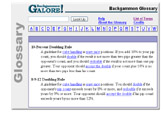 Backgammon Galore Glossary
Backgammon Galore Glossary
By Tom Keith (2007).
The world's largest dictionary of backgammon terms. Definitions of over 700 terms, many with illustrations and links to reference materials.
|

|
 Backgammon Jargon
Backgammon Jargon
By Michael Strato (2007).
A glossary of backgammon terms.
|

|
 Backgammon Dictionary
Backgammon Dictionary
By GammonVillage (2000).
List of backgammon terms and definitions.
|

|
 Backgammon Terminology
Backgammon Terminology
By Tom Keith.
Answers to common questions about backgammon terms. From the Backgammon Galore Forum Archive.
|

|
Glossary
By Karsten Nielsen (2008).
Terms and definitions.
|
|
 |
|
Equipment
|

|
 Backgammon Equipment
Backgammon Equipment
By Phil Simborg (2007).
Phil Simborg gives his recommendations for the type of board you should buy, the checkers, the dice, and the dice cups. "Backgammon is more fun and more fair when you use the right equipment."
|

|
 A Closer Look at the Meyer Dice Tube
A Closer Look at the Meyer Dice Tube
By Chuck Bower (2011).
A recent addition to backgammon equipment is the dice tube for generating dice rolls. Brett Meyer has spent considerable time over the last five years tinkering in his shop to come up with his latest edition of the tube. Chuck Bower reviews this new device to see how well it works in practice.
|

|
 Backgammon Equipment
Backgammon Equipment
By Tom Keith.
Collected postings on backgammon equipment, from the Backgammon Galore Forum Archive.
|

|
Build Your Own Board
By Rick Hagendorn (1981).
With the popularity of backgammon constantly on the rise, having a nice, personal board is a must. The prices of a good backgammon set vary from $50 to $500. However, you can build your own hardwood board for under $30, with no great carpentry skills involved.
|
|
 |

Last updated: 23 Sep 2024
|








![]()





